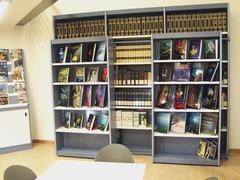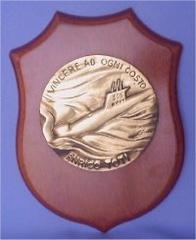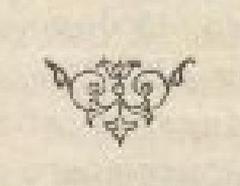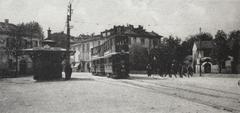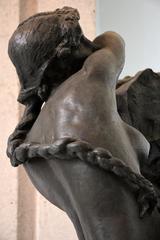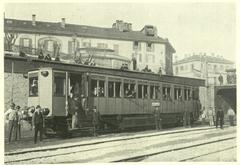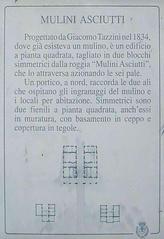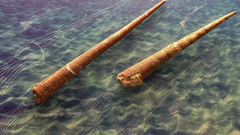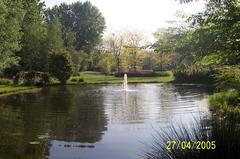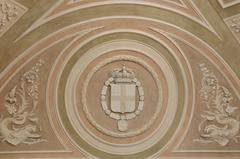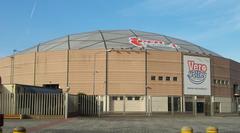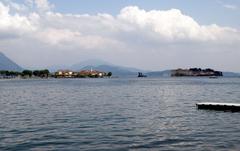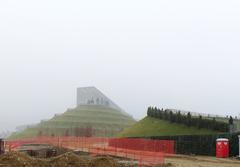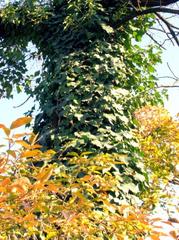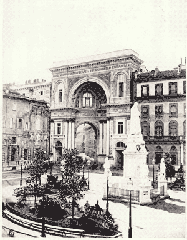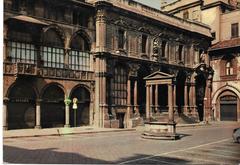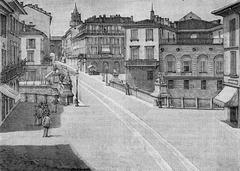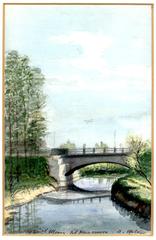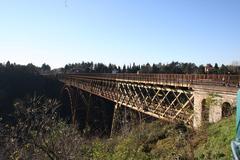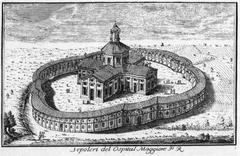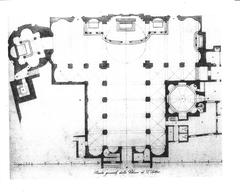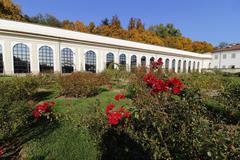Castello Visconteo Monza: Visiting Hours, Tickets, and Historical Significance
Date: 04/07/2025
Introduction
Overlooking the banks of the Lambro River near Porta Milano, the Castello Visconteo in Monza stands as a testament to the city’s medieval heritage and the enduring influence of the Visconti dynasty. Originally constructed in 1325 by Galeazzo I Visconti, this fortress was strategically positioned to defend the vital connection between Monza and Milan. Built atop the remnants of the earlier Castello di Berengario I, the castle’s quadrangular plan, thick walls, deep moats, and towering structures like the formidable Torre dei Forni reflect the defensive priorities of its era. Despite significant demolition in the centuries that followed, surviving elements—such as a minor riverside tower and foundational walls—preserve the memory of its storied past.
Today, Castello Visconteo is a vibrant cultural landmark in Monza’s urban core. It hosts art exhibitions, music festivals, educational workshops, and public events, drawing visitors and locals alike. Its proximity to Monza’s historic center, the expansive Monza Park, and attractions like the Monza Cathedral and Villa Reale make it a key destination for those interested in medieval architecture, history, and Lombardy’s rich cultural scene (Wikipedia; MonzaToday; Il Cittadino MB; Monza Tourism).
Table of Contents
- Origins and Foundation
- Architectural Evolution
- Historical Significance and Notable Events
- Visiting Castello Visconteo: Hours, Tickets & Accessibility
- Nearby Attractions and Travel Tips
- Cultural and Community Engagement
- Urban Integration and Accessibility
- Educational and Social Impact
- Economic and Tourism Development
- Frequently Asked Questions (FAQ)
- Conclusion
Origins and Foundation
The Castello Visconteo was commissioned by Galeazzo I Visconti in 1325, at a time when the Visconti family was consolidating power in the region. The site’s military significance predates the Visconti, as it was previously home to the Castello di Berengario I, underscoring its strategic importance (Wikipedia IT). Major landscape alterations, such as the diversion of the Lambro River and the demolition of a nearby church, were undertaken to facilitate the fortress’s construction (Mondi Medievali).
Architectural Evolution
Site Layout and Urban Context
Castello Visconteo’s original footprint is traceable through historical maps superimposed on modern Monza. The main entrance corresponded with today’s Largo Mazzini fountain, and the castle extended toward the current Palazzo della Rinascente (Il Cittadino MB). A double moat, supplied by the Lambro, ran along Via Azzone Visconti and around Largo Mazzini, reinforcing its defensive perimeter.
Defensive Architecture
The fortress featured walls up to two meters thick and a double moat to counter assaults and tunneling. Drawbridges, support corbels, and arrow slits were integral to its defensive design. The imposing Torre dei Forni, over 40 meters tall, functioned as both a keep and a notorious prison, with prisoners lowered into its depths via trapdoor (Musei Online).
Internal Structures and Functional Spaces
At the heart of the castle was the Rocchetta, housing the Torre dei Forni and the main prison. The adjacent Cassinazza likely served residential or service functions, with part of its walls surviving in the modern Palazzo della Cassinazza. The Salone, or great hall, attested to the castle’s administrative and ceremonial roles (Il Cittadino MB).
Materials and Construction Techniques
Local river stone and brick were the primary building materials, typical of 14th and 15th-century Lombard architecture. Machicolations, merlons, and arrow slits reflected advanced military engineering while giving the structure its distinctive medieval appearance (Musei Online).
Later Modifications and Surviving Elements
By the 18th century, much of the castle had been dismantled, with materials repurposed for other constructions. The minor riverside tower, restored in the 19th century, remains the most recognizable surviving feature, along with sections of the original walls in the Rinascente basements (Il Cittadino MB).
Historical Significance and Notable Events
During the Visconti era, the castle was a center of political intrigue, military action, and family drama. Notable events include the imprisonment of Galeazzo I by Emperor Louis IV in 1327 (Mondi Medievali), and the gifting of the castle to Caterina Visconti, who later died under mysterious circumstances in 1404 (Wikipedia). The castle survived several sieges, such as the attack by Carmagnola in 1412, before falling into decline with the advent of modern warfare. Demolition in the 16th and 19th centuries left only fragments, but these serve as powerful reminders of Monza’s medieval past.
Visiting Castello Visconteo: Hours, Tickets & Accessibility
Visiting Hours
Castello Visconteo is generally open to visitors Tuesday through Sunday, from 9:00 AM to 6:00 PM, with last admission at 5:30 PM. During summer (June–September), hours may extend to 8:00 PM. The castle is closed on Mondays and certain public holidays. Check the official Monza tourism website for up-to-date schedules.
Ticket Information
Tickets can be purchased online or at the entrance. General admission is €8 for adults, €5 for students and seniors, and free for children under 6. Family packages and combined tickets with Villa Reale di Monza are available. Special events and guided tours may require separate tickets (Monza Tourism).
Accessibility
Most public areas are accessible by wheelchair, with ramps and elevators in key locations. Accessible restrooms and baby-changing facilities are available. For specific needs, contact the visitor center in advance or consult the official tourism site.
Nearby Attractions and Travel Tips
- Monza Cathedral (Duomo di Monza): Home to the Iron Crown of Lombardy and rich medieval art (Duomo di Monza).
- Parco di Monza: One of Europe’s largest enclosed parks, offering gardens, villas, and the Formula 1 circuit (Parco di Monza).
- Villa Reale di Monza: 18th-century neoclassical residence with permanent and temporary exhibitions (Villa Reale di Monza).
- Museo e Tesoro del Duomo: Treasury and museum of sacred artifacts (Museo del Duomo).
Getting There: The castle is a short walk from Monza train station. Use public transport or bicycle rentals for convenience.
Best Time to Visit: Early mornings or weekdays for fewer crowds. Spring and autumn offer beautiful park surroundings.
Cultural and Community Engagement
Castello Visconteo is a focal point for Monza’s cultural life, hosting art exhibitions, music festivals, open-air cinema, and seasonal events like the “Monza Medievale” festival. Workshops, educational tours, and digital installations make it an engaging destination for all ages. The castle’s role as a cultural venue is enhanced by its links to nearby museums and heritage sites (Monza Tourism).
Urban Integration and Accessibility
The castle’s central location ensures excellent connectivity to Monza’s main squares, shopping streets, and public transport. Its proximity to Monza Park and integration with the city’s urban fabric make it a hub for both cultural exploration and leisure activities (Monza Tourism).
Educational and Social Impact
Heritage education initiatives at the castle include school tours, interactive exhibits, and multilingual resources. Accessibility features and inclusive programming reflect Monza’s commitment to making heritage available to all (Monza Tourism).
Economic and Tourism Development
Recent investment in museum offerings and visitor experiences has enhanced Castello Visconteo’s appeal. With approximately 10,000 annual visitors, there is ongoing potential for growth through strategic partnerships, events, and urban regeneration projects (CDT News).
Frequently Asked Questions (FAQ)
Q: What are the Castello Visconteo Monza visiting hours?
A: Tuesday–Sunday, 9:00 AM–6:00 PM (summer: until 8:00 PM); closed Mondays and public holidays.
Q: How much are tickets?
A: Adults €8, reduced €5, children under 6 free. Family and combined tickets available.
Q: Is the castle wheelchair accessible?
A: Most areas are accessible with ramps and elevators.
Q: Are guided tours available?
A: Yes, in multiple languages. Booking ahead is recommended.
Q: Can I buy tickets online?
A: Yes, via the official tourism website or at the entrance.
Q: What other sites should I visit nearby?
A: Monza Cathedral, Villa Reale, Parco di Monza, and the historic city center.
Conclusion
Castello Visconteo Monza is an essential destination for history enthusiasts, architecture lovers, and cultural explorers. Its storied past, impressive architecture, and dynamic role in Monza’s community life make it a fascinating site to visit. With accessible facilities, engaging exhibitions, and proximity to Monza’s top attractions, the castle offers a rich and varied experience. For the latest visiting hours, ticket information, and event schedules, always refer to official sources and consider using the Audiala app for enhanced guides and travel recommendations.
References
- Wikipedia. Visconti Castle (Monza)
- MonzaToday. Castello Visconteo Monza: History, Visiting Hours, Tickets & Travel Tips
- Il Cittadino MB. Com’era e dov’era il Castello Visconteo di Monza ai tempi di Leonardo da Vinci
- Monza Tourism. Tourist Information
- Mondi Medievali. Castello Visconteo
- Musei Online. Torre Viscontea Monza
- CDT News. Il castello visconteo è pronto alla svolta culturale e turistica
- Duomo di Monza
- Parco di Monza & Villa Reale
- Museo del Duomo


